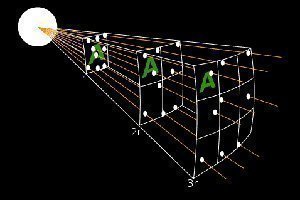Inverse Square Law
The Inverse Square Law is a physics law that states that a strength or quantity is inversely proportional to the square of the distance from the source of the strength or quantity. In more technical terms, a vector field divergence that is a result of the radial inverse square law fields with one or many sources, is proportional to the strength of the local sources and no outside sources.
What is the Justification for the Inverse Square Law?
The inverse square law applies whenever an energy, force, or conserved quantity is sent or radiated out from a point source of energy. As the emitted radiation travels further from its source, it spreads out over a space or area that is directly proportional to the square of the distance from the source of the energy. As a result, the radiated energy through any portion of this area is inversely proportional to the square of the distance from the single or point source of the energy.
When Does the Inverse Square Law Apply?
There are a number of instances when the Inverse Square Law applies in nature:
Gravitation – This refers to the attraction between two masses, in which the attraction force is proportional to the product of the two masses and inversely proportional to the square of the distance between the two objects. The force is considered attractive and will act along the line that joins the two objects. Ismael Bullialdus first suggested this portion of the law in 1645.
Electrostatics – This refers to the force of repulsion or attraction between two different particles that are electrically charged. The force is proportional to the product of the electrical charges and is inversely proportional to the square of the distance between the two and is known as Coulomb’s law.
Light and Electromagnetic Radiation – The law also applies to light in that the intensity of a light or other electromagnetic ray that radiates from a given point is inversely proportional to the square of the distance from a source. As a result, if an object is twice as far away as another object of the same size, it will receive only ¼ the energy of the closer object.
The law also has similar applications for sound and other radiation phenomena.


Comments - No Responses to “Inverse Square Law”
Sorry but comments are closed at this time.